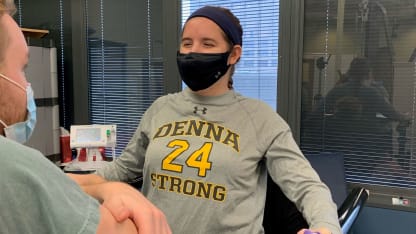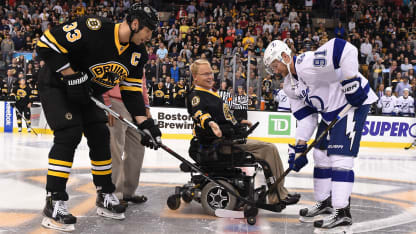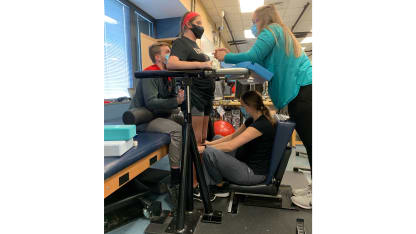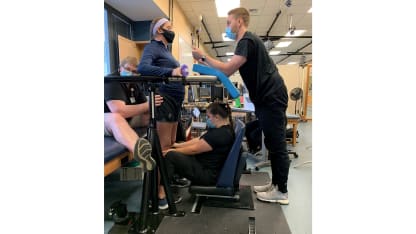Laing moved to Louisville, Kentucky, in February to take part in a major research study called The Big Idea at the University of Louisville. Five years ago this month, Laing sustained the spinal cord injury that would alter her life, going into the boards during a game for the Boston Pride of the National Women's Hockey League at Gillette Stadium in Foxborough, Massachusetts, on Dec. 31, 2015, as part of the 2016 Bridgestone NHL Winter Classic.
The Big Idea is a study that Roy supported Laing in joining, and that the Travis Roy Foundation helped fund with a $425,000 grant. Roy was a giant in the world of spinal cord injury victims after he sustained his own in 1995, 11 seconds into his first hockey game for Boston University.
Now, after
Roy's death Oct. 29 at age 45
, Laing has decided that the best way to honor him, a person who did so much for those touched by spinal cord injuries, is to push forward. For her sake. For his.
"He has always been actively waiting for the research to catch up to a place where it would really benefit him and benefit us," Laing said last month. "So I think that's why it's so important to do this research and make it available as quick as possible for a more general public. Because good people [that] have this pass away, waiting."
Laing's voice broke over the phone as she said this. Her mother, Jerilyn, who has moved to Louisville with her, jumped in.
"Travis was really supportive of Denna doing this research," Jerilyn said. "He was really thankful and grateful that she was willing to put herself out there for the trial. It's just hard to talk about."









